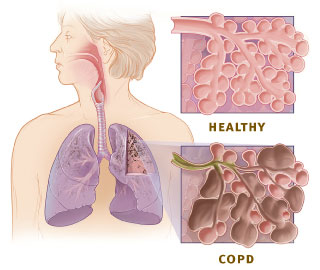Blood clots can develop in the leg veins; known as deep venous thromboses (DVTs) in passengers on long-haul flights. Sometimes termed as, “Economy class problem.”
This is mostly due to immobilization for longer period that predisposes the veins for slow clearance of blood from lower limbs; added to it is the absence of calf muscle contraction that acts as so called “second heart” to pump blood up.
| Image via Wikipedia: Muscles of Leg |
It has been seen that the incidence of DVT is associated with sitting in a window seats, where the passengers find it difficult to come out to the aisle, crossing fellow passengers and ease their legs.
And they are probably more willing to sit for long periods of time, even feeling uncomfortable because they are reluctant to disturb anybody else to let them out.
In DVT blood clots usually form in the leg veins and can become dangerous, if travel through the bloodstream, up and get lodged in the lungs, where they can cause a potentially lethal condition called pulmonary embolisms.
Long-haul immobility does boost DVT risk, the experts noted. But as the ACCP (American College of Chest Physicians) panel sifted through the evidence, they found no basis for the notion of "economy class syndrome." Rather, folks in a window seat might be more hesitant to get up and move around -- and that might raise their odds for a DVT.
It is good to point out here that if, somebody is healthy, he need not really worry about DVT because the risk, even on a long-term flight is considerably less than one in a thousand.
Warning is for those who have had a clot earlier, an abnormality of their coagulation system, disability that affects mobility, are obese or have active cancer.
In addition to those risk factors, the ACCP says that air passengers who are elderly, pregnant, taking supplementary estrogen (including oral contraceptives) or recently underwent surgery and/or trauma also face a higher-than-normal risk for DVT.
Apart from seating considerations, the guidelines also suggest that people on flights lasting six or more hours move about frequently and stretch their calf muscles.
| Image via Wikipedia; DVT of Right Leg |
Higher-risk individuals should also wear graduated compression stockings that stretch below the knee. It "would be crazy" for passengers at normal risk to wear such stockings, and the ACCP guidelines specifically argue against their use by healthy passengers.
The guidelines also generally discourage the taking of aspirin and/or anticoagulant medications for the specific intent of lowering DVT risk. That said, those at very high risk are encouraged to consult their doctors in order to weigh the pros and cons of such drugs.
"Getting up once every hour or two during a long flight, and walking up and down the aisle is what somebody needs”.
And "It's not about class and the slight extra room one gets in a business class seat. It's about sitting by the window and looking over at the guy sleeping next and preferring to wait rather than get up. That's the issue."
"It can be added here that this would also apply to people taking long car trips."
...
Click here to Subscribe news feed from "Clinicianonnet; so that you do not miss out anything that can be valuable to you !!
...






